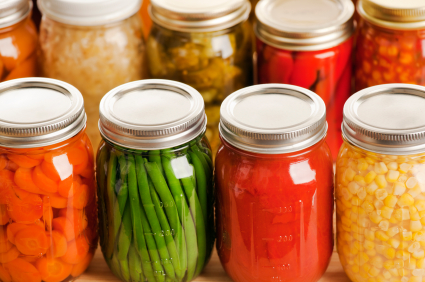Canning Tips for Fair Competition
TEXARKANA, Ark. –
Have you ever visited the canning exhibits at the fair and wondered, “How did they do that?” Believe it or not, it’s really quite easy. It just requires a little time to produce blue ribbon canning entries.
The following tips will help you prepare blue ribbon quality food exhibits for fairs:
First and foremost, remember the primary reason for canning is to extend the food supply beyond the growing season with safe, high quality food. This means that the first thing a fair judge will consider is whether or not the product is safe. Judges will not taste the product or open the jar, but can tell through other means.
Although it is sometimes difficult for a judge to determine the actual processing procedure used, most judges are very adept at recognizing when a product has not been processed properly.
A seal on the jar usually indicates it has received some form of heat treatment and there are a number of ways to make a jar seal that do not assure safety. This means a judge will check for a seal but will not let the presence of a seal be the only factor in determining if the product is safe.
One key to assuring safety that is easy for a judge to spot is the amount of head space in the jar. Head space is the empty space between the top of the food and the bottom of the lid. The food expands into this space during heating, forcing out trapped air so that no air is available for use by potential spoilage organisms.
If too much space is left, the food will not expand enough to get all the air out. If too little is left, there will not be enough room for the food to expand and it will cook out of the jar. If you have noticed green beans with only half a jar of liquid, this may have been the reason and will not give you a blue ribbon entry.
What's the recommended head space?
Recommended head space amounts are:
- one-fourth inch for jellies, jams and other sweet spreads
- one-half inch for fruits, tomatoes and pickles
- 1 to 1 1/4 inch for vegetables and meats
The way the food is packed into the jar is also an indication of the safety of the product that is easily assessed by a judge. Food should be packed tight enough to make efficient use of space but not so tightly that heat circulation during processing is difficult.
What other characteristics are judges looking for?
A number of other product characteristics can offer judges a clue to the amount of cooking, and therefore the potential for safety of the product. For example, liquid in the jar should be clear and free of bubbles or material from the food. The product should appear cooked without being either too firm or mushy. The color of the product should be characteristic of a cooked product.
After a judge has determined the product has been processed safely, they then look at the appearance of the product. Canned foods presented for judging at the fair should be in standard canning jars that are clean. Commercial jars such as those used for mayonnaise, peanut butter and coffee are not recommended for canning and are not allowed for competition at the fair. Lids should be clean and free of dents and rust.
Product pieces should be uniform in size and shape. Although this uniformity helps assure adequate heat transfer and a safer product, a safe product can be produced for home use allowing some variation in the size and shape of product pieces. However, a product for entry in the fair should be as close to perfect as it can get, and this includes having product pieces as similar as possible.
You too can have blue ribbon entries at the fairs by following the above mentioned tips!
For more information, contact the Miller County Extension Office, 870-779-3609 or visit us in room 215 at the Miller County Courthouse, or contact your local county Extension agent.
Try this recipe for Old-Fashioned Peach Preserves
- 2 quarts sliced, peeled, hard, ripe peaches (about 10 large)
- 6 cups sugar
- Combine fruit and sugar; let stand 12 to 18 hours in a cool place.
- Sterilize canning jars.
- Bring fruit and sugar mixture slowly to boiling, stirring frequently.
- Boil gently until fruit becomes clear and syrup thick, about 40 minutes. As mixture thickens, stir frequently to prevent sticking. Skim, if necessary.
- Pour hot preserves into hot jars, leaving one-fourth inch head space.
- Wipe jar rims and adjust lids.
- Process 5 minutes in a boiling water bath.
Tried & True Tip: Don’t over-pack foods when filling jars; this allows for expansion and formation of a proper vacuum seal. Food forced into the sealing surface while expanding, or undergoing rapid pressure drops, can break the seal. Make sure the rim of the jar, lid and ring are immaculately clean before placing lid on jar and processing.
By Carla Due
County Extension Agent - FCS
U of A System Division of Agriculture
Cooperative Extension Service
400 Laurel Street, Suite 215 Texarkana AR 71854
(870) 779-3609
cdue@uada.edu
Related Links
